The recent series of articles on compressed air motors in "Aero Modeller" served to remind the author that he in fact owned one. That little gem was installed in a toy aeroplane made by Air Hoggs. This toy aeroplane combined a very low efficiency airframe with a very low efficiency propeller. Not surprisingly, the flight performance of the combination was abysmal.
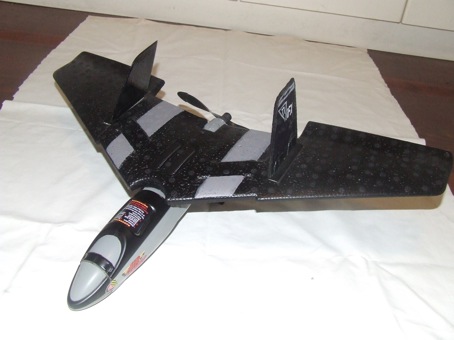
A surge of power lasting about 3 seconds produced a flight time of about 10 seconds: a highly unrewarding performance for the amount of work in pumping up the pressure tank. A glance at the propeller gave a hint as to the poor performance of that unit. The blades were a twisted, cambered plate with no airfoil of any recognisable heritage. The blade tips were covered in thick shrouds intended to avoid damage to the launchers hands: as it happens, this was a noble cause, as being of a pusher configuration, one's hands could easily pass through the propeller disc with consequent damage. A spreader bar on the rudimentary undercarriage also acted as safety measure in this regard.
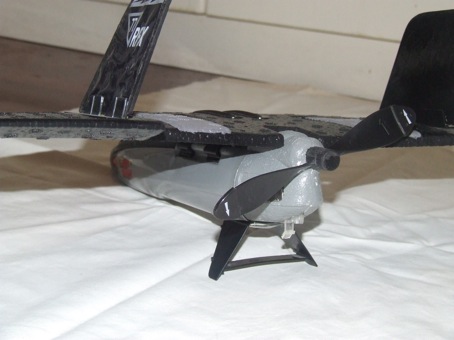
At this point in the deliberations, my rusty memory process moved back in time to 1984, a time of great interest in man-powered flight. A 1/8th scale model of the Chrysalis man-powered aeroplane had been tested, using a propeller of similarly doubtful heritage. Performance of the model was poor, height being barely maintained.
Subsequently, a new propeller based on the algorithms of professor E. Eugene Larrabee, was constructed and test flown. To everyone's surprise, including that of Larrabee, the model "now climbed strongly with fully charged batteries and would make three and a half figure-of-eights to cheering audience in M.I.T.'s Dupont athletics centre". Wow!
To one whose life has been devoted to "Honour and Advancement", the smell of glory was in the air for this propeller designer . What would be the result of replacing the Air Hoggs prop with one designed by those very same algorithms of the late professor Larrabee? Glory in a form, even if only reflected glory, would be mine to savour! Definitely!
So with a few guesses at the aerodynamic parameters required, my Celeron 500 computer was fired up to design the new, highly efficient propeller which would, hopefully, blow the Air Hoggs prop into the weeds. Another 2 days later, my CNC milling machine spat out the required mould for making a nice carbon prop.
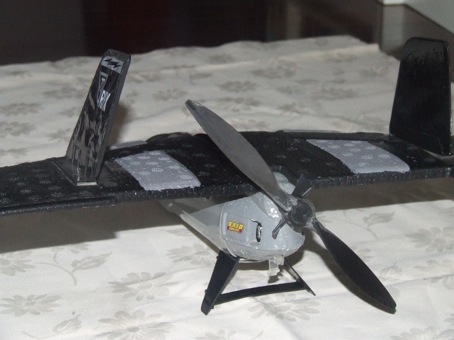
But first, some measurements were required, to place a patina of science over the whole process. Static thrust and RPM were measured for both props.
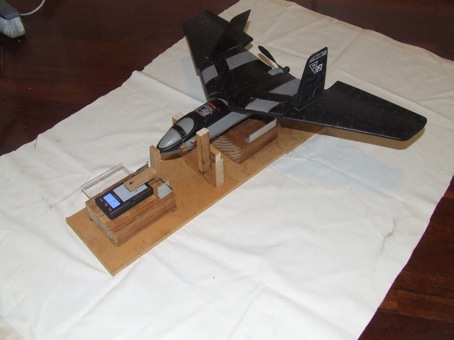
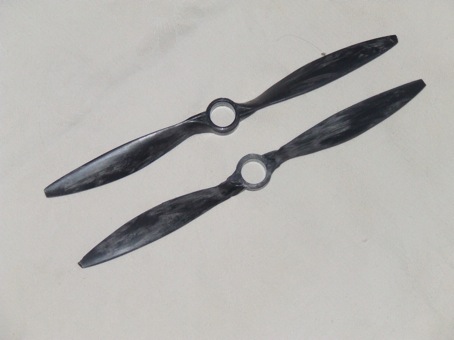
As it happened, both props had about the same static thrust of about 80 grams at start-up. RPM for the Air Hoggs prop was 4500, and for the new prop 3500. Not particularly enlightening, so it was off to the field for some test flying. On arrival at my flying field, rain, wind and lightning arrived to add some drama to the scene. Being late in the cyclone season here in Western Australia, I was disappointed to find no twister.
The Air Hoggs prop was trialled first. Flight time was of the order of 10 seconds, the trees surrounding the test zone being in no danger from collision. The blades were then cut off, the new prop being a slide-on fit to the prop boss. The tank was recharged for test flight of the new prop.
A flick to start, the model launched, with the immediate result that the model crashed to the ground as Warfarin-impregnated blood spurted from my right index finger. Launching by the fuselage was a bad idea.
With the blood flow stemmed, a launch position was adopted similar to that for throwing C/L combat models. This worked, the model pulling away cleanly and climbing strongly. Too strongly, as the model charged toward the trees bordering the field: to my amazement, the craft swerved amongst the trees as if piloted, alighting safely on the adjacent roadway.
Flight time: 25 seconds! Honour and Advancement were mine! I could feel Larrabee's eye's upon me from up in the clouds, cheering for yet another victory of the Betz, Prandtl, Goldstein theory of propellers, dating in origin to 1919. Not to forget the still earlier insights of Drzeweicki and Lanchester.
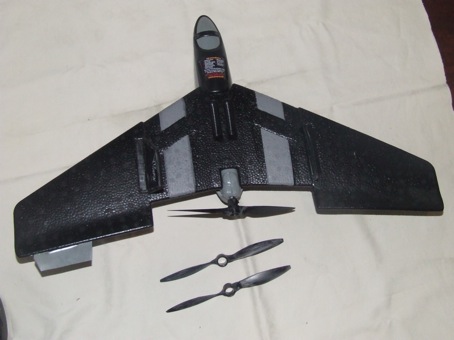
So what changes in design produced this outcome? In a nutshell, the diameter had been increased, with a good airfoil added to the original Air Hoggs prop. I guess that if there is moral to this story, one needs to combine an efficient motor with an efficient propeller to make a clunker like the Air Hoggs toy perform.
|